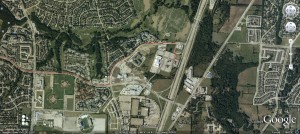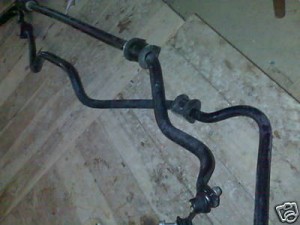Recently I began testing with the RaceLogic Performancebox gps data logger. Previously I had been testing with the Race Technology AP-22 accelerometer-based performance meter. This test is intended as a side-by-side comparison of the two meters on simultaneous runs. I ran both meters at the same time, on the same runs, then have attempted below to put like-results side by side for comparison.
The Performancebox is a gps based data logger. It takes 10 position readings a second and calculates performance data based on GPS satellites. The AP-22 uses accelerometers and ‘dead reckons’ the position of the vehicle based on acceleration and time. Both are valid approaches. The results one might expect to be somewhat different because the meters begin the run based on different rules, and measure the result in different ways. However, my test results below seem fairly consistent between the two meters.
Summary Results:
| PB | AP-22 | |
| 0-60 | 6.60 | 6.63 |
| 0-60 | 6.88 | 6.62 |
| 0-60 | 6.42 | 6.12 |
| 0-60 | 6.10 | 6.03 |
| 0-60 | 7.07 | 6.72 |
Detailed Results:
| PerformanceBox Test Data | AP-22 Test Data | |||||||
| MPH | Time(s) | Dist(f) | mph | s | g | ft | hp | |
| 10 | 0.90 | 6.56 | 10 | 0.9 | 0.5 | 6 | 55 | |
| 20 | 1.85 | 27.49 | 20 | 1.83 | 0.48 | 26 | 107 | |
| 30 | 2.73 | 59.43 | 30 | 2.68 | 0.59 | 57 | 198 | |
| 40 | 3.78 | 113.93 | 40 | 3.76 | 0.35 | 113 | 160 | |
| 50 | 5.12 | 202.33 | 50 | 5.08 | 0.32 | 201 | 189 | |
| 60 | 6.60 | 322.09 | 60 | 6.63 | 0.26 | 326 | 193 | |
| Pk Pwr: | 58.5mph | 6.37s | 304ft | 209hp | ||||
| Peak G: | 30.3mph | 2.70s | 58ft | 0.60g | ||||
| PerformanceBox Test Data | AP-22 Test Data | |||||||
| MPH | Time(s) | Dist(f) | mph | s | g | ft | hp | |
| 10 | 1.09 | 6.97 | 10 | 0.92 | 0.53 | 6 | 57 | |
| 20 | 1.95 | 25.87 | 20 | 1.76 | 0.55 | 24 | 122 | |
| 30 | 2.89 | 60.62 | 30 | 2.69 | 0.46 | 59 | 156 | |
| 40 | 3.95 | 115.38 | 40 | 3.74 | 0.40 | 113 | 180 | |
| 50 | 5.30 | 204.91 | 50 | 5.08 | 0.32 | 202 | 185 | |
| 60 | 6.88 | 332.43 | 60 | 6.62 | 0.27 | 326 | 195 | |
| 70 | 8.76 | 512.24 | 70 | 8.49 | 0.22 | 505 | 194 | |
| Pk Pwr: | 66.2mph | 7.71s | 427ft | 209hp | ||||
| Peak G: | 20.2mph | 1.77s | 25ft | 0.56g | ||||
| PerformanceBox Test Data | AP-22 Test Data | |||||||
| MPH | Time(s) | Dist(f) | mph | s | g | ft | hp | |
| 10 | 0.91 | 5.56 | 10 | 0.74 | 0.62 | 5 | 67 | |
| 20 | 1.67 | 22.23 | 20 | 1.48 | 0.56 | 21 | 124 | |
| 30 | 2.61 | 56.86 | 30 | 2.41 | 0.47 | 55 | 158 | |
| 40 | 3.65 | 110.42 | 40 | 3.42 | 0.42 | 108 | 189 | |
| 50 | 4.95 | 196.19 | 50 | 4.70 | 0.32 | 192 | 189 | |
| 60 | 6.42 | 315.16 | 60 | 6.12 | 0.30 | 307 | 215 | |
| Pk Pwr: | 64.7mph | 6.86s | 375ft | 228hp | ||||
| Peak G: | 16.3mph | 1.19s | 13ft | 0.66g | ||||
| PerformanceBox Test Data | AP-22 Test Data | |||||||
| MPH | Time(s) | Dist(f) | mph | s | g | ft | hp | |
| 10 | 0.65 | 5.54 | 10 | 0.75 | 0.58 | 5 | 64 | |
| 20 | 1.42 | 22.38 | 20 | 1.49 | 0.61 | 21 | 134 | |
| 30 | 2.36 | 56.86 | 30 | 2.41 | 0.5 | 55 | 166 | |
| 40 | 3.37 | 109.27 | 40 | 3.41 | 0.44 | 107 | 198 | |
| 50 | 4.64 | 193.37 | 50 | 4.64 | 0.35 | 189 | 201 | |
| 60 | 6.10 | 311.02 | 60 | 6.03 | 0.3 | 301 | 215 | |
| 70 | 7.77 | 471.17 | 70 | 7.67 | 0.24 | 458 | 211 | |
| Pk Pwr: | 65.8mph | 6.93s | 384ft | 233hp | ||||
| Peak G: | 19.4mph | 1.44s | 20ft | 0.62g | ||||
| PerformanceBox Test Data | AP-22 Test Data | |||||||
| MPH | Time(s) | Dist(f) | mph | s | g | ft | hp | |
| 10 | 1.19 | 7.48 | 10 | 0.93 | 0.49 | 6 | 54 | |
| 20 | 2.09 | 27 | 20 | 1.79 | 0.54 | 25 | 120 | |
| 30 | 2.99 | 60.43 | 30 | 2.68 | 0.46 | 58 | 155 | |
| 40 | 4.07 | 116.39 | 40 | 3.76 | 0.39 | 114 | 177 | |
| 50 | 5.44 | 206.73 | 50 | 5.14 | 0.3 | 205 | 178 | |
| 60 | 7.07 | 338.1 | 60 | 6.72 | 0.27 | 333 | 195 | |
| 70 | 9.04 | 527.18 | 70 | 8.70 | 0.19 | 523 | 171 | |
| Pk Pwr: | 64.4mph | 7.51s | 405ft | 203hp | ||||
| Peak G: | 25.1mph | 14.01s | 970ft | 0.65g |
Conclusion:
The meters tend to read similarly. The AP-22 results on average for the runs shown were 0.19sec lower at 60 mph.
The AP-22 results appear to be similar to the PB results if rollout is considered.



